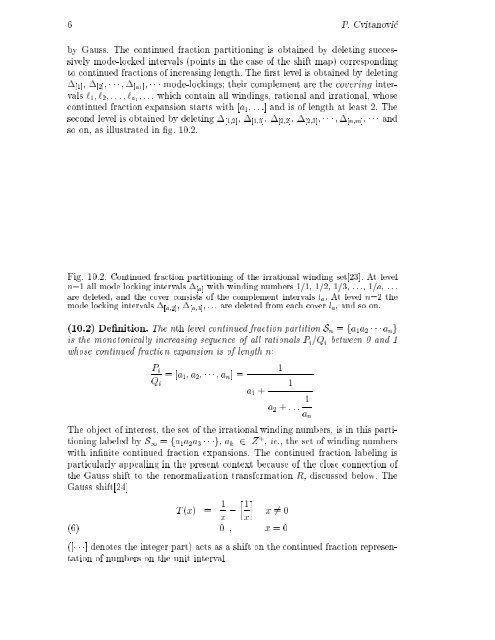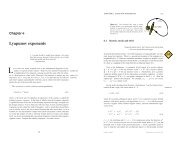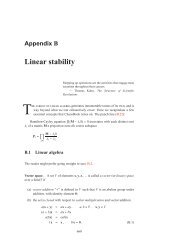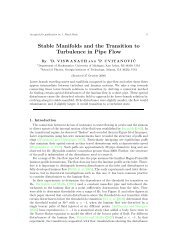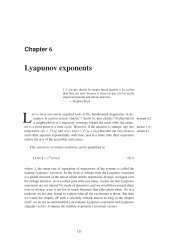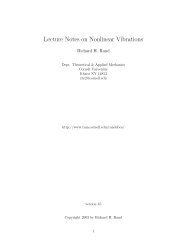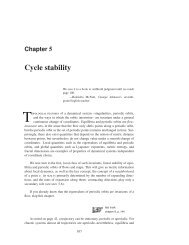10 Circle Maps: Irrationally Winding - Center for Nonlinear Science
10 Circle Maps: Irrationally Winding - Center for Nonlinear Science
10 Circle Maps: Irrationally Winding - Center for Nonlinear Science
You also want an ePaper? Increase the reach of your titles
YUMPU automatically turns print PDFs into web optimized ePapers that Google loves.
6 P. Cvitanovic<br />
by Gauss. The continued fraction partitioning is obtained by deleting successively<br />
mode-locked intervals (points in the case of the shift map) corresponding<br />
to continued fractions of increasing length. The rst level is obtained by deleting<br />
[1] [2] [a1 ] mode-lockings their complement are the covering intervals<br />
`1`2:::`a1 ::: which contain all windings, rational and irrational, whose<br />
continued fraction expansion starts with [a 1 :::] and is of length at least 2. The<br />
second level is obtained by deleting [12] [13] [22] [23] [nm] and<br />
so on, as illustrated in g. <strong>10</strong>.2.<br />
Fig. <strong>10</strong>.2. Continued fraction partitioning of the irrational winding set[23]. At level<br />
n=1 all mode locking intervals [a] with winding numbers 1/1, 1/2, 1/3, :::, 1/a, :::<br />
are deleted, and the cover consists of the complement intervals l a . At level n=2 the<br />
mode locking intervals [a2] , [a3] ::: are deleted from each cover l a , and so on.<br />
(<strong>10</strong>.2) Denition. The nth level continued fraction partition S n = fa 1 a 2 a n g<br />
is the monotonically increasing sequence of all rationals P i =Q i between 0 and 1<br />
whose continued fraction expansion is of length n:<br />
P i<br />
Q i<br />
=[a 1 a 2 a n ]=<br />
a 1 +<br />
1<br />
1<br />
a 2 + ::: 1 a n<br />
The object of interest, the set of the irrational winding numbers, is in this partitioning<br />
labeled by S 1 = fa 1 a 2 a 3 g, a k 2 Z + , ie., the set of winding numbers<br />
with innite continued fraction expansions. The continued fraction labeling is<br />
particularly appealing in the present context because of the close connection of<br />
the Gauss shift to the renormalization trans<strong>for</strong>mation R, discussed below. The<br />
Gauss shift[24]<br />
(6)<br />
T (x) = 1 1<br />
x ; x<br />
x 6= 0<br />
0 x =0<br />
([] denotes the integer part) acts as a shift on the continued fraction representation<br />
of numbers on the unit interval


